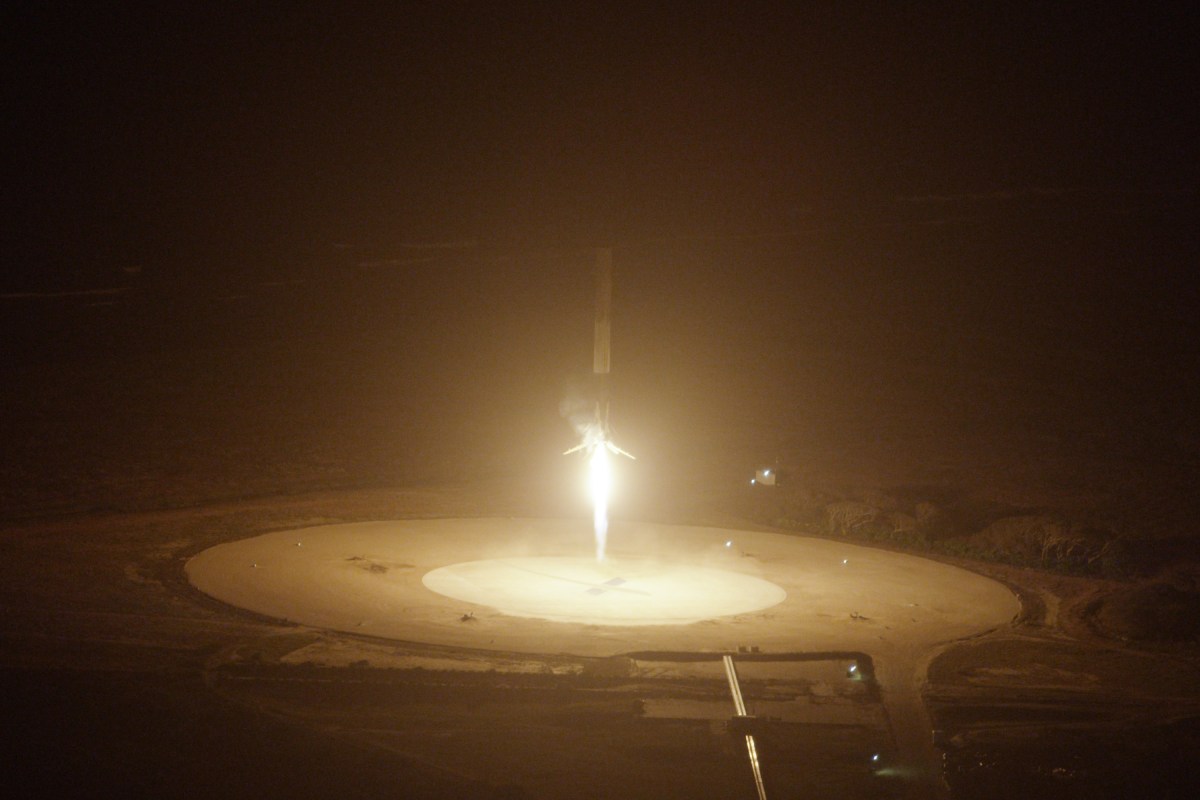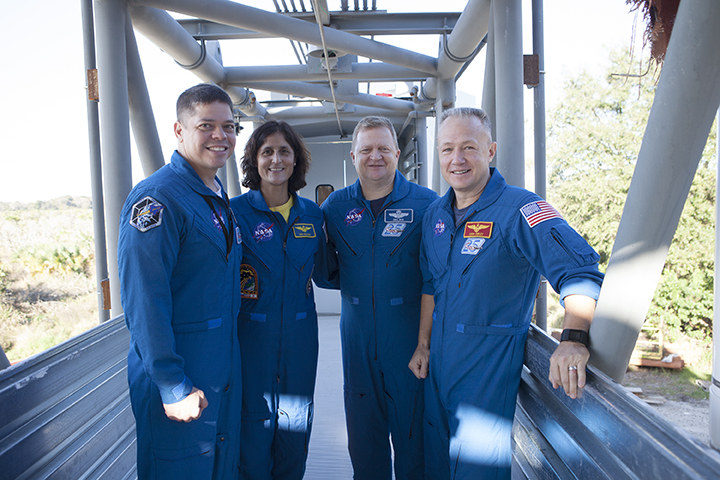 Do you love NASA’s Commercial Crew Program? Are you looking for a creative way to show your holiday spirit? Download a copy of the Commercial Crew astronaut kids Winter Wonderland coloring sheet and post your best designs on Facebook and Twitter using #LaunchAmerica.
Do you love NASA’s Commercial Crew Program? Are you looking for a creative way to show your holiday spirit? Download a copy of the Commercial Crew astronaut kids Winter Wonderland coloring sheet and post your best designs on Facebook and Twitter using #LaunchAmerica.
Month: December 2015
15 in ’15: How Commercial Crew Advanced Toward Flight

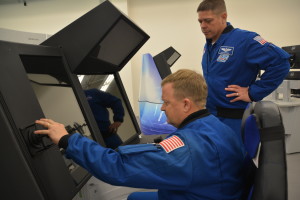 NASA’s Commercial Crew Program took vital steps in 2015 to move America closer to flying astronauts from its own soil aboard American spacecraft in 2017. Boeing and SpaceX, each a partner with NASA on separate crew transportation systems, performed systems tests, built up assembly areas and modified the launch pads at Kennedy Space Center and Cape Canaveral Air Force Station to safely launch crew members from the storied shores of Florida’s Space Coast.
NASA’s Commercial Crew Program took vital steps in 2015 to move America closer to flying astronauts from its own soil aboard American spacecraft in 2017. Boeing and SpaceX, each a partner with NASA on separate crew transportation systems, performed systems tests, built up assembly areas and modified the launch pads at Kennedy Space Center and Cape Canaveral Air Force Station to safely launch crew members from the storied shores of Florida’s Space Coast.
We chose the top 15 accomplishments, including:
– NASA Named First Four Astronauts to Train with Boeing and SpaceX
– United Launch Alliance Completed Crew Access Tower Column at SLC-41
– Crew Dragon Completed Pad Abort Test
Take a look at the full list at http://go.nasa.gov/1InI6kr
Congratulations to SpaceX on Historic Booster Landing!
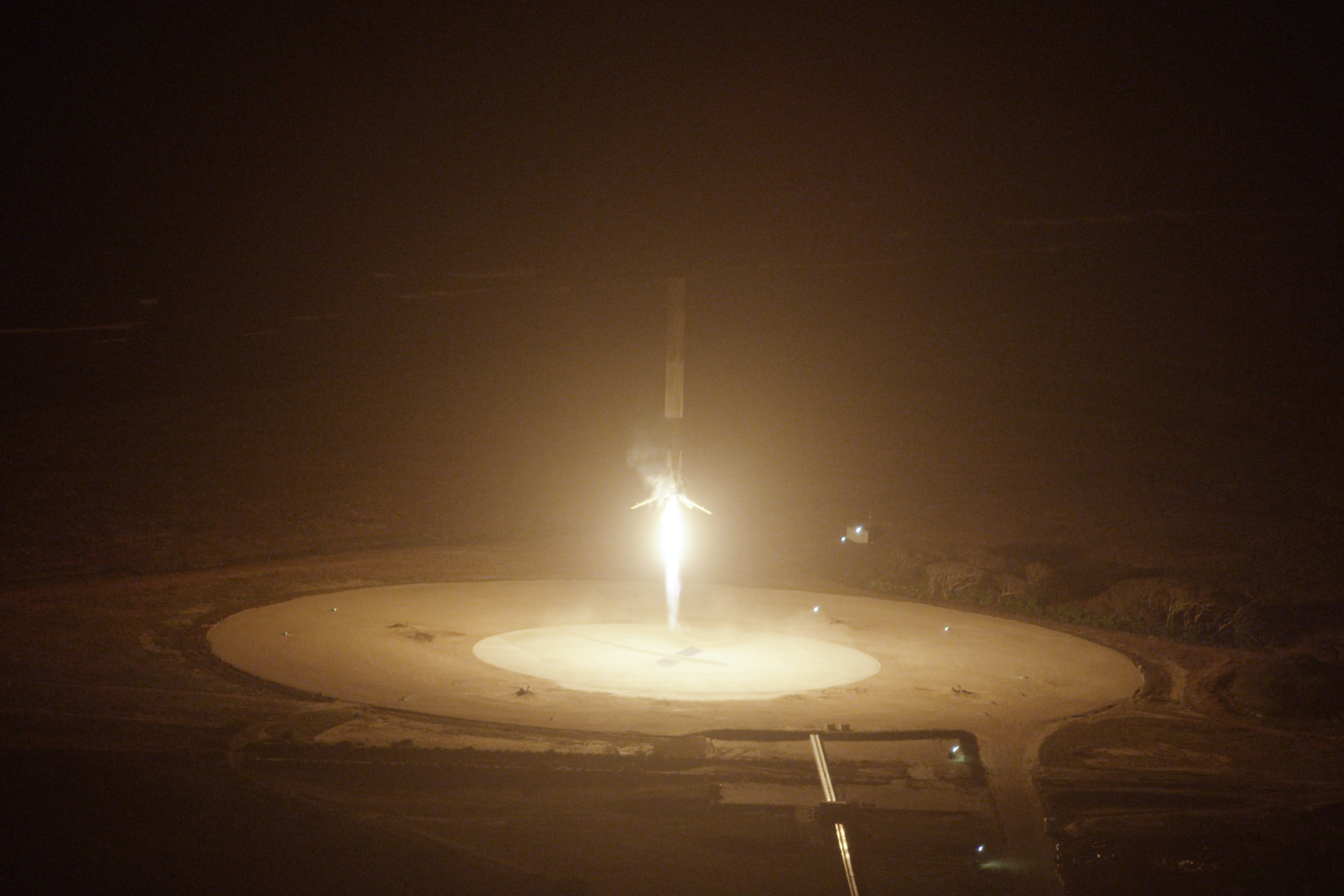 SpaceX accomplished a major feat Monday night when a Falcon 9 rocket’s first stage returned from space and landed safely on a concrete pad six miles away from where it lifted off minutes before. While the first stage returned to Earth, the second stage of the upgraded Falcon 9 executed the main mission of the flight by delivering 11 ORBCOMM satellites to orbit.
SpaceX accomplished a major feat Monday night when a Falcon 9 rocket’s first stage returned from space and landed safely on a concrete pad six miles away from where it lifted off minutes before. While the first stage returned to Earth, the second stage of the upgraded Falcon 9 executed the main mission of the flight by delivering 11 ORBCOMM satellites to orbit.
Lifting off from Space Launch Complex 40 at Cape Canaveral Air Force Station at 8:29 p.m. EST, the Falcon 9 sped toward space on the power of its nine Merlin 1D engines. Four minutes into the flight, the first stage separated as planned and the second stage took over, lighting a single Merlin engine and pushing the stack of ORBCOMM satellites faster and higher. Meanwhile, the first stage ignited several of its engines again to head back to Earth. Moving back at supersonic speeds that sent a sonic boom across Florida’s Space Coast, the first stage engines ignited to slow the booster down as it neared Landing Complex-1. A bright orange trail marked the boosters descent before its four landing legs unfolded and the booster set itself down.
The achievement may mark a turning point in reusability for launch vehicles, which are traditionally not recovered following the delivery of a payload to orbit. NASA’s space shuttle fleet was an exception to that — the orbiters flew multiple times on the same engines and using solid rocket boosters that were recovered and reflown.
SpaceX is working with NASA’s Commercial Crew Program as it develops the Crew Dragon spacecraft for launch on a Falcon 9 to carry astronauts to the International Space Station starting in 2017. Photo and video by SpaceX.
Spacewalkers Route Cables for Commercial Crew Docking Adapters
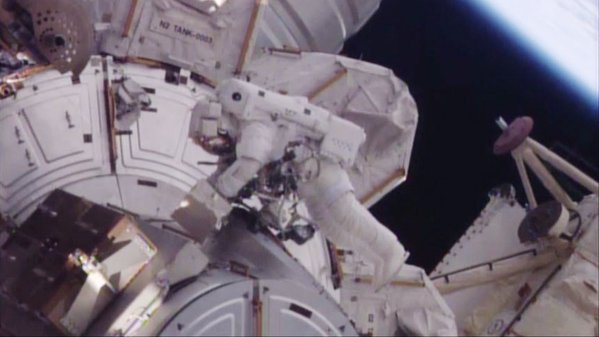
Astronauts spent part of their spacewalk Monday morning routing power and data system cables on the International Space Station to ports where spacecraft being developed in partnership with NASA’s Commercial Crew Program will dock to the orbiting laboratory in the near future. The cables will be connected to a pair of International Docking Adapters once they are delivered during upcoming, uncrewed commercial resupply missions. The adapters contain several sensor systems that will allow spacecraft to autonomously dock with the station. NASA astronauts Scott Kelly, who is nine months into a yearlong mission and Tim Kopra, who arrived to the station Dec. 15, made the spacewalk.
NASA Orders Second Operational Mission for Boeing’s Starliner
 NASA’s Commercial Crew Program placed an order for the second operational mission to carry astronauts to the International Space Station aboard Boeing’s CST-100 Starliner spacecraft. The order means that seven vehicles are now in different levels of planning for Commercial Crew flight tests and operational missions by Boeing and by SpaceX, which also is developing the Crew Dragon spacecraft for human-rated missions to the space station. The seven missions in process are:
NASA’s Commercial Crew Program placed an order for the second operational mission to carry astronauts to the International Space Station aboard Boeing’s CST-100 Starliner spacecraft. The order means that seven vehicles are now in different levels of planning for Commercial Crew flight tests and operational missions by Boeing and by SpaceX, which also is developing the Crew Dragon spacecraft for human-rated missions to the space station. The seven missions in process are:
2 uncrewed flight tests, one for each company,
2 crewed flight tests, one each,
3 operational missions ordered to date.
The order was placed now because of the long lead time to build a spacecraft, test it and process it for launch.
“Once certified by NASA, the Boeing CST-100 Starliner and SpaceX Crew Dragon each will be capable of at least two crew launches to the station per year,” said Kathy Lueders, manager of NASA’s Commercial Crew Program. “Placing orders for those missions now really sets us up for a sustainable future aboard the International Space Station.”
This is the third in a series of four guaranteed orders NASA will make under the Commercial Crew Transportation Capability contracts known as CCtCap. Boeing and SpaceX received their first orders in May and November, respectively, and have started planning for, building and procuring the necessary hardware and assets to carry out their first missions for the agency. NASA will identify at a later time which company will fly a mission to the station first. There are many more details to this story and you can read them at http://go.nasa.gov/1IZhxSH
Young Explorers’ Artwork Featured in 2016 Calendar
 Some of the best works of art come from children who are only limited by their imaginations, like the more than 150 young explorers from across the country who submitted artwork depicting human spaceflight as they see it. Sixteen masterpieces were chosen to be included in the Commercial Crew Program’s 2016 Children’s Artwork Calendar, which is now available for download here. We offer a huge “thank you!” to all the explorers, ranging in age from four to 12, who submitted their work and hope that everyone will enjoy and use this calendar next year.
Some of the best works of art come from children who are only limited by their imaginations, like the more than 150 young explorers from across the country who submitted artwork depicting human spaceflight as they see it. Sixteen masterpieces were chosen to be included in the Commercial Crew Program’s 2016 Children’s Artwork Calendar, which is now available for download here. We offer a huge “thank you!” to all the explorers, ranging in age from four to 12, who submitted their work and hope that everyone will enjoy and use this calendar next year.
Astronauts See Progress First Hand
NASA’s Commercial Crew Program astronauts had the opportunity to see the Crew Access Arm and White Room under construction near Kennedy Space Center in Florida last week. Read more of what they had to say about the progress made thus far, at http://go.nasa.gov/1QPRz54.
Seeking Sky Walkers
Have you ever wanted to explore to a galaxy far, far away? Is the Force strong in you? NASA seeks sky walkers to join the astronaut alliance. Learn more, at www.nasa.gov/astronauts.
Astronauts Celebrate With Builders Topping of Crew Access Tower
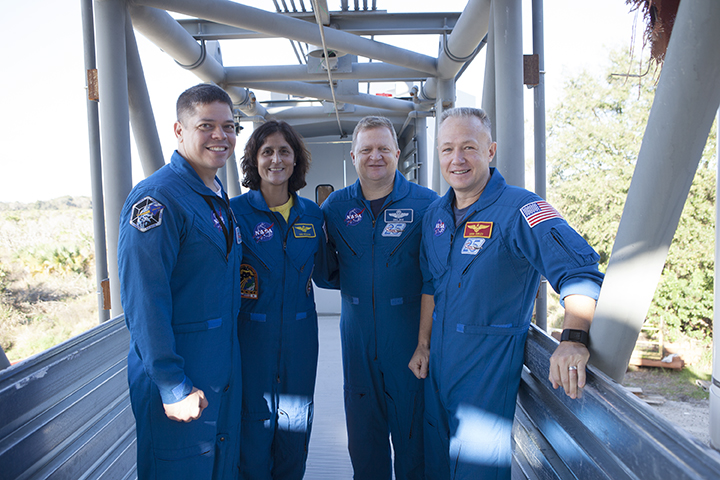
 Four astronauts training for test flights with NASA’s Commercial Crew program joined the festivities at Space Launch Complex 41 Thursday morning as one of the highest steel beams was placed on the Crew Access Tower during a “topping off” ceremony with United Launch Alliance, Boeing and Hensel Phelps at the Cape Canaveral Air Force Station launch site in Florida.
Four astronauts training for test flights with NASA’s Commercial Crew program joined the festivities at Space Launch Complex 41 Thursday morning as one of the highest steel beams was placed on the Crew Access Tower during a “topping off” ceremony with United Launch Alliance, Boeing and Hensel Phelps at the Cape Canaveral Air Force Station launch site in Florida.
“It’s really an honor to get down here. We’re humbled to be a part of launching rockets for the United States again,” said Doug Hurley, a veteran of space shuttle missions and one of the four chosen to work closely with partners of NASA’s Commercial Crew Program during development, testing and training. Bob Behnken, Eric Boe and Suni Williams were also selected and took part in the employee-focused event.
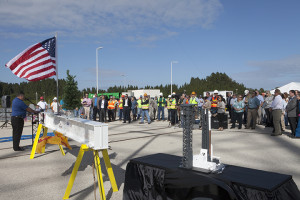 “It’s amazing how many people it takes to get us into space,” Boe said.
“It’s amazing how many people it takes to get us into space,” Boe said.
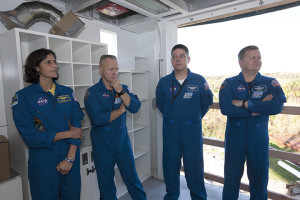 A large crowd of employees from numerous companies gathered mid-morning to sign the 650-pound beam and watch a crane lift it into place atop the 200-foot-tall Crew Access Tower constructed over the past year. It was built in segments complete with stairs, cable trays and other fittings a few miles from the launch pad, then those segments were stacked on top of each other to form the tower. The Crew Access Arm and White Room the astronauts looked over today will be attached to the tower after several months’ of testing and fit checks.
A large crowd of employees from numerous companies gathered mid-morning to sign the 650-pound beam and watch a crane lift it into place atop the 200-foot-tall Crew Access Tower constructed over the past year. It was built in segments complete with stairs, cable trays and other fittings a few miles from the launch pad, then those segments were stacked on top of each other to form the tower. The Crew Access Arm and White Room the astronauts looked over today will be attached to the tower after several months’ of testing and fit checks.
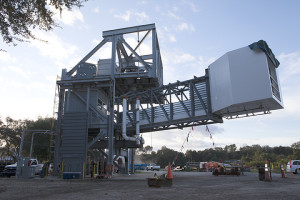 “We’ve poured 1,000 cubic yards of concrete and mounted nearly 1 million pounds of steel, and we’ve done it in spectacular fashion,” said Howard Biegler, launch operations lead for ULA’s Human Launch Services.
“We’ve poured 1,000 cubic yards of concrete and mounted nearly 1 million pounds of steel, and we’ve done it in spectacular fashion,” said Howard Biegler, launch operations lead for ULA’s Human Launch Services.
Employees were asked to sign the beam before it was lifted into place and welded to the top of the tower.
“Today you are part of history,” said Kathy Lueders, program manager of NASA’s Commercial Crew Program. “Stop and enjoy this moment. I hope everyone has been able to write their name on the beam because you are part of the critical safety network that is making this all possible.”
Prior to the ceremony at SLC-41, the astronauts toured the White Room and Crew Access Arm undergoing testing at a construction yard near Kennedy Space Center. The White Room will be the stepping off point to space for astronauts as they board a Boeing CST-100 Starliner for liftoff on a ULA Atlas V rocket. Designed as a clean area to keep contaminants out of the spacecraft and off the astronauts’ suits, white rooms are the place where technicians make last-minute additions to the spacesuit and make sure everything is ready to flight as the flight crew climbs inside for launch. White rooms have always been a part of NASA’s human spaceflight efforts, from Mercury to Gemini and Apollo to the space shuttle.
“This is the last thing that whoever flies the Starliner is going to see before they go into space,” Hurley told the workers who built the structures.
Boeing and SpaceX are developing a new generation of spacecraft to carry astronauts to the International Space Station beginning in 2017. Both companies are also deep into construction and modification of launch facilities at NASA’s Kennedy Space Center in Florida to safely host astronaut crews as they launch from American soil for the first time since 2011. Designs for launch facilities have been confirmed through NASA panels and in-depth examinations.
For Boeing, launching from SLC-41 meant building the Crew Access Tower, the first crew-focused structure at Cape Canaveral since Apollo 7. SpaceX is modifying historic Launch Pad 39A for its commercial crew missions on the Crew Dragon spacecraft launching on its Falcon 9 rockets. It also will have a White Room tailored to its designs that will offer astronauts and ground crew safety as they board and a way to leave the spacecraft in a hurry before launch in the unlikely event of an emergency. Photo credits: NASA/Kim Shiflett
Show Us How You See Space!
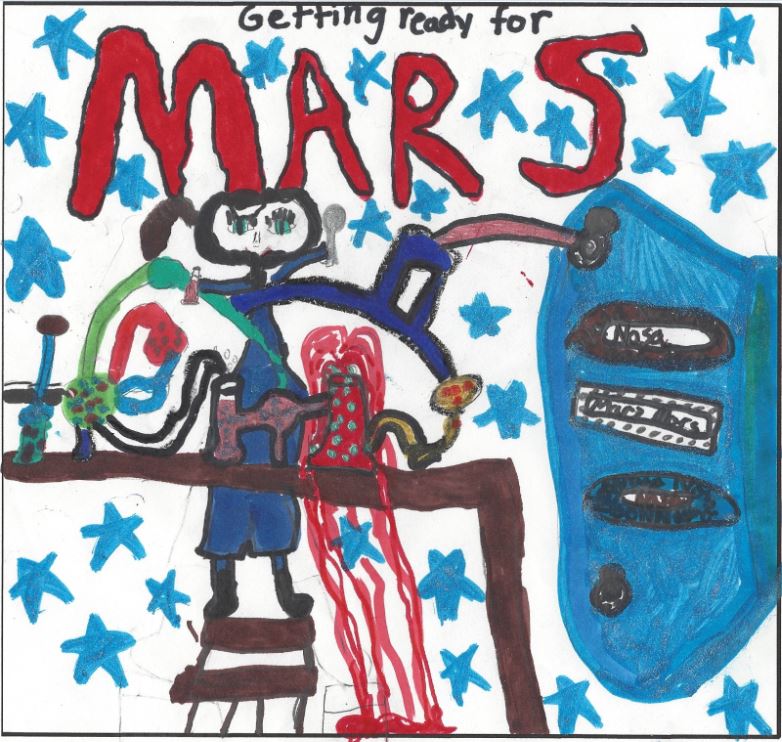 Exploration begins with imagination, so as NASA embarks on a new generation of research and exploration we want you to imagine some of the ways space explorers will work in space and what a journey to Mars will mean for people all over the world. Here in NASA’s Commercial Crew Program, we are working with the American aerospace industry to launch astronauts from U.S. soil to the International Space Station, the cornerstone of current human space exploration.
Exploration begins with imagination, so as NASA embarks on a new generation of research and exploration we want you to imagine some of the ways space explorers will work in space and what a journey to Mars will mean for people all over the world. Here in NASA’s Commercial Crew Program, we are working with the American aerospace industry to launch astronauts from U.S. soil to the International Space Station, the cornerstone of current human space exploration.
We want to get the most we can out of that unique orbiting laboratory, therefore commercial crew spacecraft are geared toward allowing an additional resident on the station, raising the standard station crew to seven. That will double the amount of time astronauts can devote to science in space and increase the work done there to answer some of the mysteries of sending astronauts to deep space and to Mars in the future.
What do you think that research will look like in orbit? What kind of laboratory in space do think of? The artwork above shows what Georgia, 10, of Merritt Island, Florida, envisions. Show us what you see when you think of the many aspects of space exploration, including the work that goes into making it safe, and we might put your vision in our Children’s Artwork Calendar for 2016. We have several topics to inspire you, along with the rules of the competition, at this website. And we’ve extended the deadline to midnight Eastern on Tuesday, Dec. 8. We look forward to seeing your vision of spaceflight!

